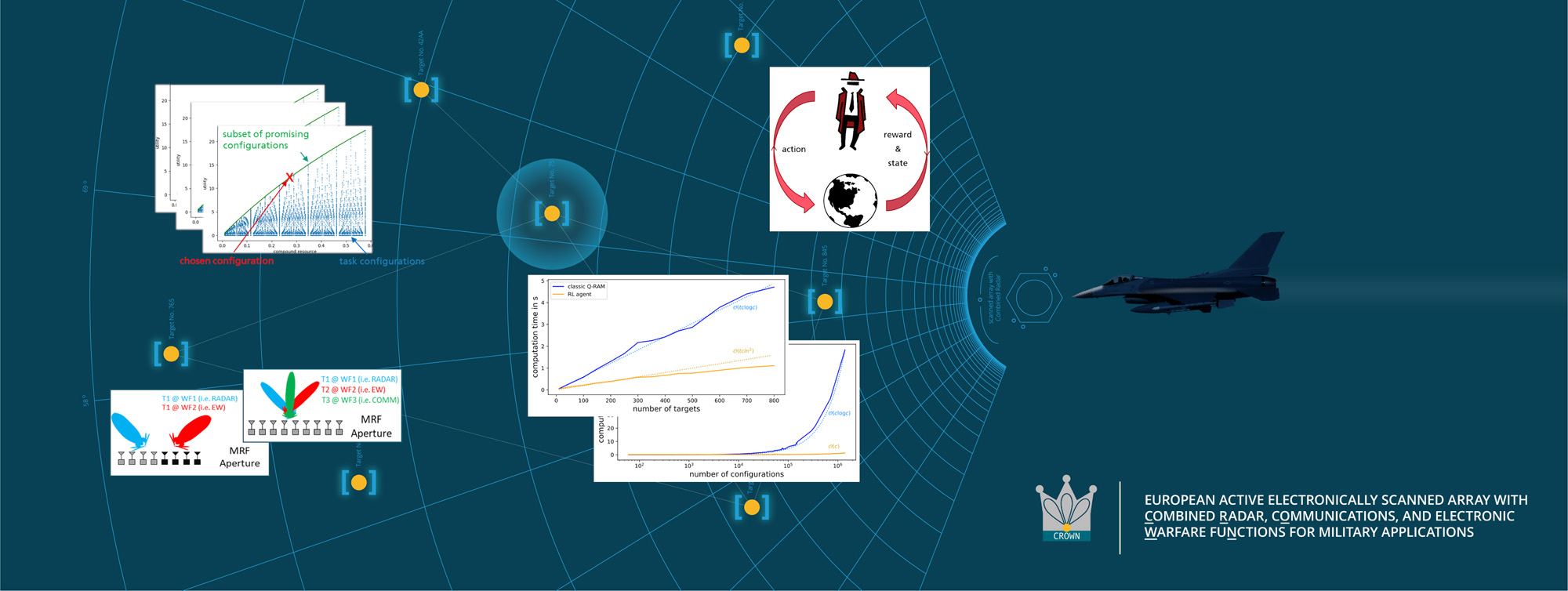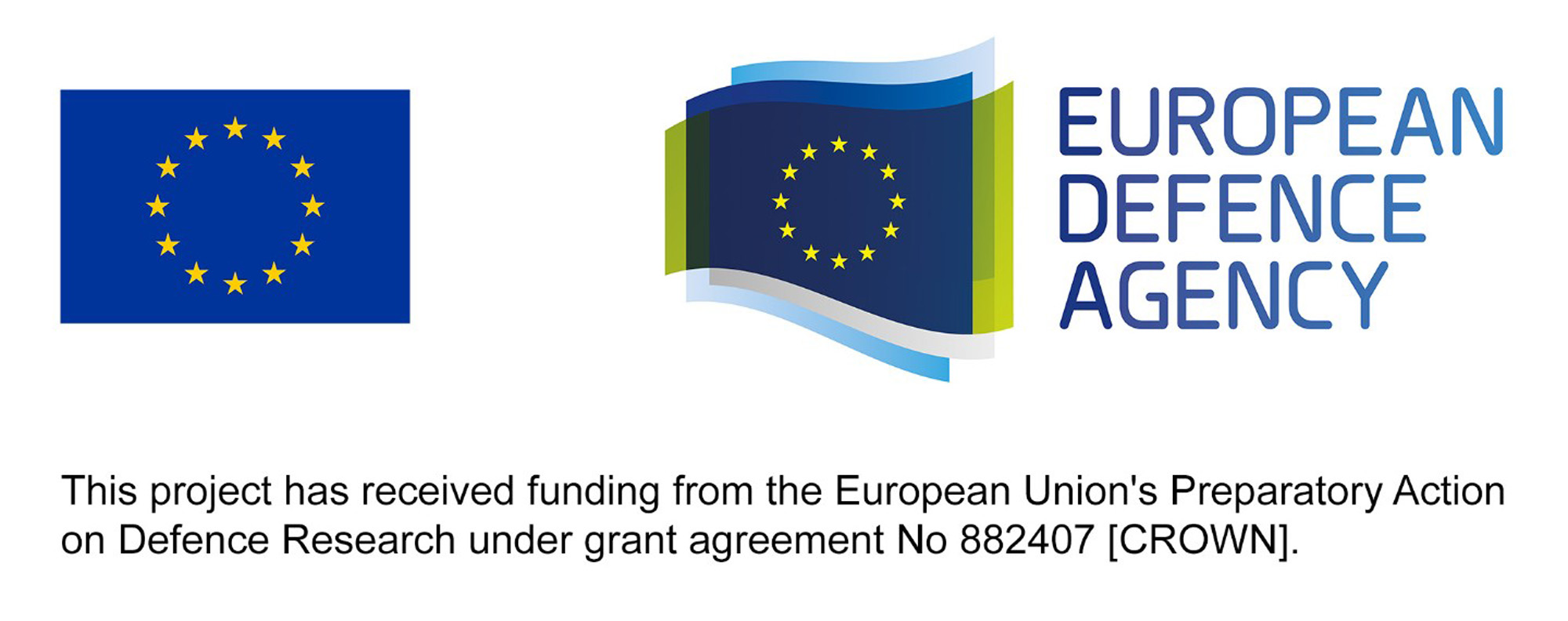Radar plus electronic warfare
Simultaneously generating SAR images, communicating with the ground station and jamming the enemy – this is what a novel air defence system currently being developed by Fraunhofer FHR in cooperation with various European industrial and research partners is supposed to make possible.


A jack of all trades device – in other words, a system that can take on several functions at once? Researchers at Fraunhofer FHR are working on such a system on behalf of the European Commission under the Preparatory Action on Defence Research (PADR) 2019, together with ten European partners from industry and research institutions. In the CROWN project, short for »European active electronically scanned array with Combined Radar, cOmmunications, and electronic Warfare fuNctions for military applications,« they have been developing an RF system that can perform radar functions as well as communications and electronic warfare. So far, this is unique – at least in Europe. In the future, the system could be attached to a drone or integrated into the »Future Combat Air System FCAS« and simultaneously use radar to create situational awareness, communicate with friendly platforms and jam the enemy. In order to be independent of other countries, all the parts needed for this are to come from Europe – which is currently still a challenge. The first major milestone the international research team hopes to achieve this year is to show what resources would be needed to make this happens.
The researchers at Fraunhofer FHR are responsible for resource management, among other things. After all, modern RF systems are supposed to take on many tasks, some of them simultaneously. This can be accompanied by time-related problems, and the energy supply can also be a challenge. For example, it makes little sense to search for new targets in the airspace if the system already can’t keep up with tracking the known targets. For starters, the team of experts is working to develop methods that allow the antenna to be divided into several small antennas, known as sub-apertures, that operate in parallel. Then, however, pre-established rules are no longer sufficient to let the system make sensible decisions. The researchers therefore use reinforcement learning methods, a special form of machine learning: They give the system feedbacks on decisions they have made and, in this way, teach it to constantly improve. Another challenge that Fraunhofer FHR is addressing is the realisation of different waveforms of the signals. This is to prevent the signals emitted by the sub-apertures from interfering with each other.
By the end of 2023, according to the plan, the European team would like to raise its development to Technology Readiness Level TRL 4, i.e., to the demonstrator level. A follow-up project will then aim to reach a TRL of 7, equivalent to a prototype.